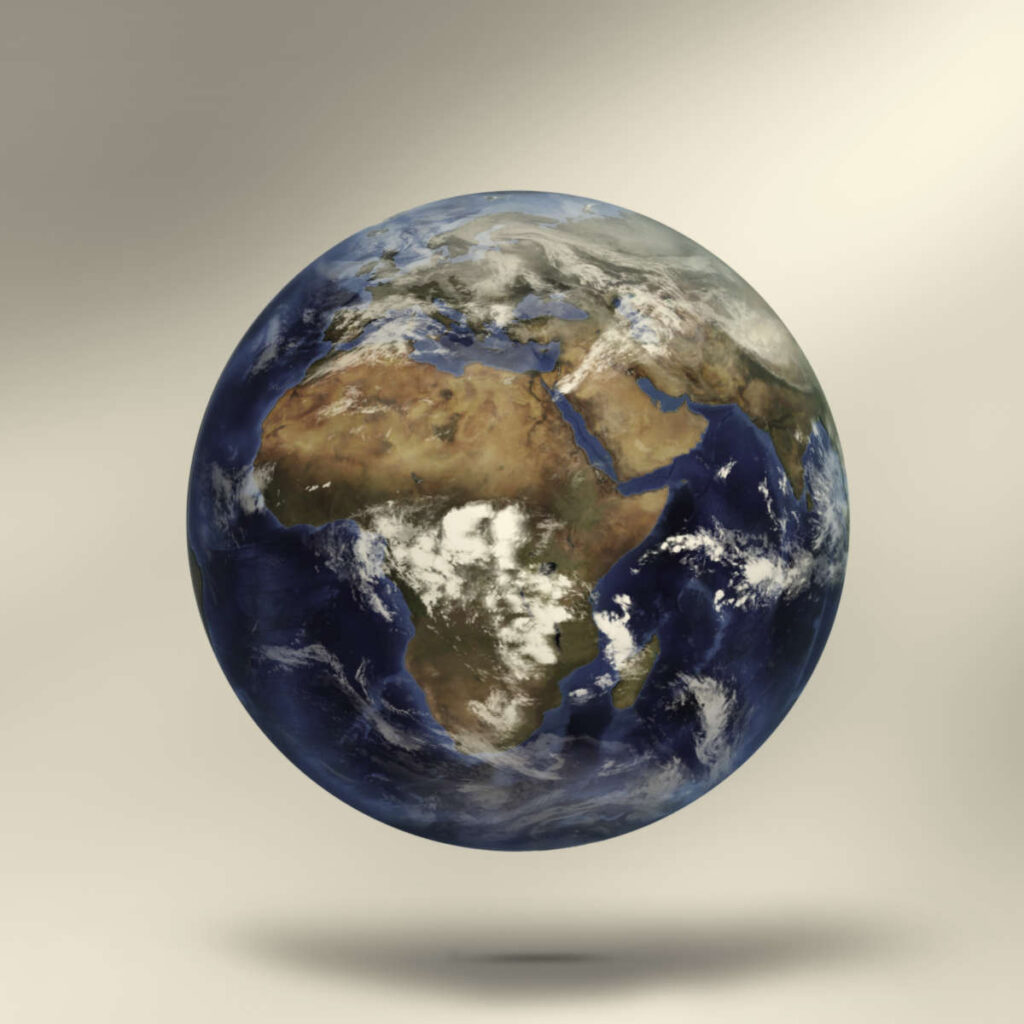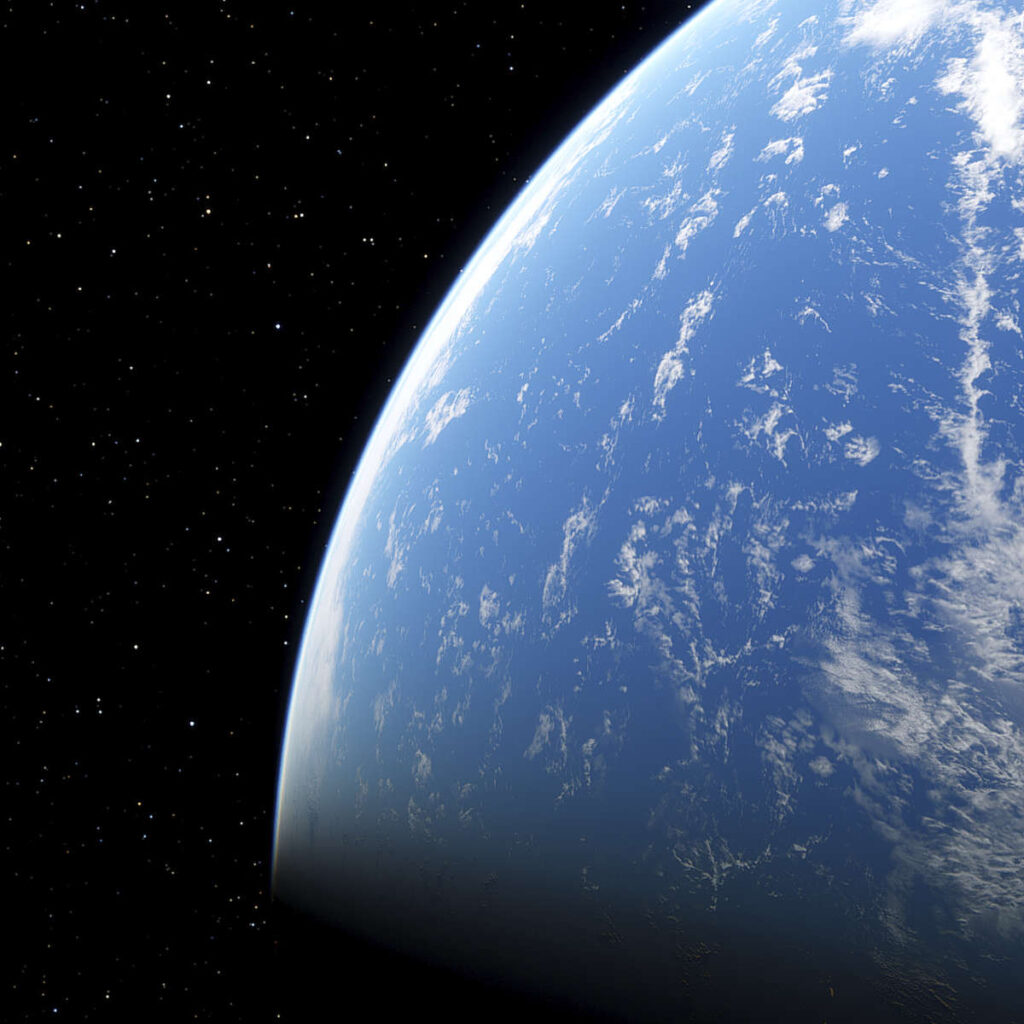Last Reviewed and Updated on June 24, 2022
The Earth is our home so we dare say it’s the single most important planet in our Solar System. But how much do you really know about it? Explore some of the most interesting facts about the planet Earth, we are sure some of them will surprise you.

1. Earth is the only planet in our Solar System with oceans of water
We are kicking off this list of facts about the planet Earth with one of its most important features. No other planet in our Solar System has oceans or a water body that would be even close to that. While there is evidence of water on other planets, none have it in the form of stable bodies of liquid water on the surface.

2. The core of the Earth is hotter than the surface of the Sun
The Sun is the hottest astronomical object in the Solar System, but there are parts of planets and some phenomena that get hotter than the temperature of the surface of the Sun is.
One such example is the Earth’s core.
Also read: is lightning hotter than the Sun?
3. Earth is not a perfect sphere
We commonly see earth represented as a perfect sphere, but it’s not. It is an oblate spheroid, as its diameter at the equator is 26.7miles / 43 km larger than its diameter at the poles.
4. The gravity on the planet is uneven
Gravity is measured by the speed at which the objects accelerate towards each other. On Earth, this is measured at 9.807 m/s² (or rounded up to 9.81 m/s²). This number is the average.
One of the most obvious variations happens with the change of the position on Earth’s surface, for example, the closer you are to the equator, the weaker the gravity will be. It’s about 9.78 meters per second at the equator and 9.83 meters per second at the poles.
The higher you are the less gravity. It decreases with altitude.
As the Earth is uneven and different parts have different compositions (water, rock composition, tectonic structures…) the mass concentrated at different parts will vary. As mass is a factor when it comes to gravity there will be slight variations in different areas.
5. It has volcanic activity
You may be used to news about volcanoes erupting at one time or another on the planet Earth. But this isn’t all that common in our Solar System.
While evidence of volcanic activity in the past has been observed on most planets and astronomical bodies in our Solar System, active volcanism has only been confirmed on 4, with Earth being the only planet on the list.
Volcanic activity has been confirmed on Earth, Io (moon of Jupiter), Triton (moon of Neptune), and Enceladus (moon of Saturn).

6. Earth gets over 100 metric tons of galactic dust each day
Over 100 metric tons of particles, mostly galactic dust, fall on Earth each day.
You would think that Earth is “gaining weight” because of this, however, the mass of Earth isn’t really affected by this, as at the same time it is losing mass due to the atmospheric escape of gasses. The mass lost is estimated to be more than the mass gained, but it’s still negligible compared to the whole mass of Earth. One of the coolest facts about the planet Earth.
7. Over 70% of Earth’s surface is covered with water
We already mentioned that the Earth is the only planet in our Solar System with large bodies of surface water (like the oceans), but the fact that water covers more than 70% of the surface is even more impressive. It’s no wonder Earth is also nicknamed the blue planet.

8. It takes Earth 23 hours 56 minutes and 4 seconds to rotate once on its axis
This is one of the facts about the planet Earth that surprises most. Don’t worry, the day as we know it still lasts 24 hours.
It takes Earth 23 hours 56 minutes and 4 seconds to rotate around its axis. This is known as a sidereal day.
A solar day on the other hand lasts 24 hours. It is the time it takes the Earth to rotate so that the Sun in the sky is returned to the same place in the sky.
9. A year on Earth is 365.2564 days long
It takes Earth 365.2564 days to make one complete revolution around the Sun. The difference of 0.2564 is why we have leap years almost every 4 days, a year that has 366 days instead of 365.
You might ask yourself why it’s almost every 4 years and not every 4 years? It’s because the extra 0.2564 days still doesn’t even out if you add one full day every 4 years.
There is a rule for leap years. A leap year is a year that must be dividable by 4. In addition to that, if the year is also dividable by 100 (2000, 2100, 2300…) it must also be dividable by 400 to be a leap year. So the year 2000 was a leap year, while 1900, which is dividable by 4, 100 but not 400 wasn’t a leap year.
10. Besides Moon, we also have “second moons”
The Moon is the only natural satellite of Earth. But there are other astronomical objects that can have relatively stable orbits of Earth, even if only temporarily. These are called near-Earth objects.
Kamoʻoalewa, a very small asteroid, is a quasi-satellite of Earth as it appears to orbit the Sun as well as the Earth.
Small natural objects may sometimes enter orbit around Earth for short periods of time.
